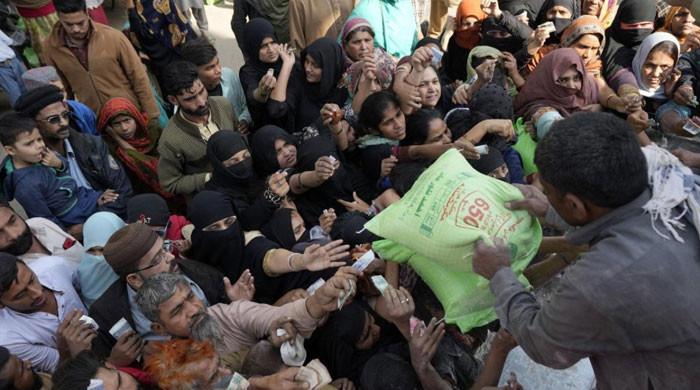By Staff Reporter
ISLAMABAD: Pakistan’s Finance Ministry has projected that inflation in April could reach an unprecedented range of 36 percent to 38 percent year-on-year due to a surge in food and energy prices, as well as the effects of a weakened currency.
The ministry’s monthly Economic Update and Outlook stated that the slow recovery from last year’s floods has resulted in shortages of essential crops in the domestic market, exacerbating the pressure on prices.
“(The) economy is still facing significant challenges characterized by high inflation and a slowdown in economic activity. Inflation (CPI) is expected to remain at an elevated level in the months to come,” the ministry said.
“Its key drivers are food and energy price hikes. Further, currency depreciation and rising administered prices have contributed to the jack-up overall price level.”
The ministry said the government, in cooperation with the provinces, is closely monitoring the demand and supply of essential commodities to mitigate inflationary pressures as the central bank’s contractionary monetary policy failed to subside inflationary expectations.
“Inflation is expected to remain in the range of 36-38 percent for April 2023.”
The ministry said the government’s stabilizing policies have produced promising outcomes, despite challenges, such as a shift towards a surplus in the current account. “This shift could help alleviate external financing constraints, reinforce exchange rate stability, and foster economic confidence.”
Moreover, the ministry expressed optimism that the successful execution of the International Monetary Fund (IMF) program will draw more capital inflows, further stabilize the exchange rate, and alleviate inflationary pressures.
The ministry said the trend in MEI indicators for the first nine months of the current fiscal year has been volatile due to high inflation, high-interest rates, fiscal consolidation, and a lack of confidence in economic agents. Nevertheless, there has been a slight improvement in March, driven by modest growth in exports on a month-on-month basis and an uptick in the CLI of Pakistan’s primary export markets.
Agriculture: According to the ministry, the availability of seeds, agriculture credit, and fertilizers will remain satisfactory during the Kharif crop season in 2023. The main rainfed areas are expected to receive adequate rainfall, but lower parts of the country may experience a slight deficiency during the Kharif season.
Industrial: The Large-Scale Manufacturing index recorded below its natural capacity level since the start of the current fiscal year, but some bottoming-out appears to be taking place. In March, LSM output is expected to have increased compared to February, driven by positive seasonal effects. However, due to a high base effect, the YoY LSM may still be marginally negative.
External: In March, the trade deficit in goods and services declined by 9.1 percent MoM and 54 percent YoY, according to balance of payment data. Positive developments were observed as exports of goods and services increased by 9.5 percent and imports of goods and services increased by 2.3 percent. The high growth in exports offset the impact of the increase in imports, resulting in a contained trade deficit. Remittances increased by 27 percent MoM to $2.5 billion in March 2023, compared to $1.99 billion in February 2023, due to improved exchange rate adjustments and the effects of Ramzan and Eid. The current account turned into a surplus of $654 million in March, the highest level since November 2020. In April, imports are expected to increase somewhat compared to March due to the government’s decision to relax pro-growth imports to stimulate domestic economic activities, while remittances are expected to remain at the same level as in March.
Fiscal: Despite unprecedented challenges in the domestic and global economic situation, fiscal consolidation efforts are on track to create fiscal buffers and restore macroeconomic stability. Consolidation measures have contributed to a sharp increase in revenues from both tax and non-tax collection while containing overall spending growth due to a large drop in non-markup expenditures. However, risks to the fiscal sector still persist, including the FBR tax collection, which remained below the target set for the first nine months of the current fiscal year due to a slowdown in domestic economic activity and import compression. On the expenditure side, higher policy rates at the domestic and global levels have led to higher markup payments despite reducing non-markup spending. The government needs to follow an effective revenue mobilization and cautious expenditure management strategy to end the current fiscal year with a substantial decline in fiscal deficit compared to last year.
Copyright © 2021 Independent Pakistan | All rights reserved




